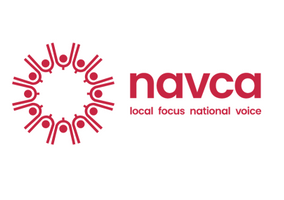New guidance has been published to help smaller and local voluntary, community and social enterprise (VCSE) organisations operating in local authority areas experiencing financial difficulties.
Published today by NAVCA and the Lloyds Bank Foundation for England and Wales (LBFEW), the guidance sets out the key stages of a section 114 notice (s114 notice) journey, detailing what VCSE organisations should expect and do to navigate each.
Alongside the guidance, NAVCA and LBFEW published a policy report that aims to provide additional information and context concerning their key findings and recommendations for the VCSE sector, local government and central government.
Six stages of a s114 notice
The guidance identifies six sets of circumstances observed before, during and beyond the issuing of a s114 notice.
A council issues a s114 notice when it believes its expenditure will exceed its income for a particular financial year and cannot make new spending commitments.
This means that funding available to the VCSE sector (grants and contracts) will likely come at risk of being cut as any non-statutory services or activities are no longer prioritised for funding.
The guidance says in the earlier stages before a s114 notice – VCSE funding reduced, VCSE cuts possible and VCSE cuts implemented – “a local authority is likely to display signs of financial vulnerabilities, or may even be formally consulting on service and/or VCSE cuts”.
The latter, formal s114 notice stages – at risk of s114, s114 declared and s114 ongoing – cover everything from the moment a local council declares itself at risk to circumstances where the area has been operating under a s114 for some time.
“What these stages do offer is an informal planning framework, a way to consider where your area currently finds itself and to learn how other VCSE organisations have reacted or adapted in such circumstances,” the guidance reads.
“You may find several stages apply to your current situation; perhaps you’ve experienced repeated years of cuts and are also in an area declared at risk. In this case, the guidance listed in both stages may be relevant to you.”
Building approaches to navigate s114 notices
In the accompanying policy report, NAVCA and LBFEW urged VCSE stakeholders to evidence their role and local contribution through engagement and data and show why they would be missed if there were funding cuts.
They should also build relationships with their local authority and other sector partners, “using a collective voice and identifying how information can be shared across local VCSE networks to develop a collaborative approach to support the community”.
In addition, NAVCA and LBFEW encouraged the sector to reframe its external narrative to highlight the impact of cuts on beneficiaries and the wider community.
Both called on the local government to involve VCSE organisations early in budgeting and financial challenges, build relationships with them and recognise the sector’s value holistically.
Funding cuts can produce detrimental ‘cliff edges’
Jill Hopkinson, policy manager at NAVCA, said: “Financial instability is affecting many councils, and this is having an immense impact on communities.
“When councils are taking hard decisions to balance their budgets and cutting funding for VCS organisations, it can produce cliff edges which are detrimental to people and communities.
“Good relationships and communication between councils, local VCS infrastructure support organisations (LIOs) and the VCS are vital. Voluntary organisations are key partners, and collaboration with the sector facilitated by LIOs, can be an opportunity to reshape ways of working.”
LBFW’s regional manager Gary Beharrell added: “Small frontline charities are already picking up the pieces of more than a decade of local government funding cuts by subsidising contracts that don't cover the full cost of delivering services and absorbing increased demand due to reduced support elsewhere.
“The pressure on small charities is further exacerbated when a s114 is issued. Some of this pressure on small charities, and the eventual impact on communities, can be alleviated if local authorities and the voluntary sector collaborate and develop a strategic approach.
“For this to be achievable, the government must provide greater support for local authorities struggling financially, and ultimately, for a review of local government finance arrangements.”
Related articles












